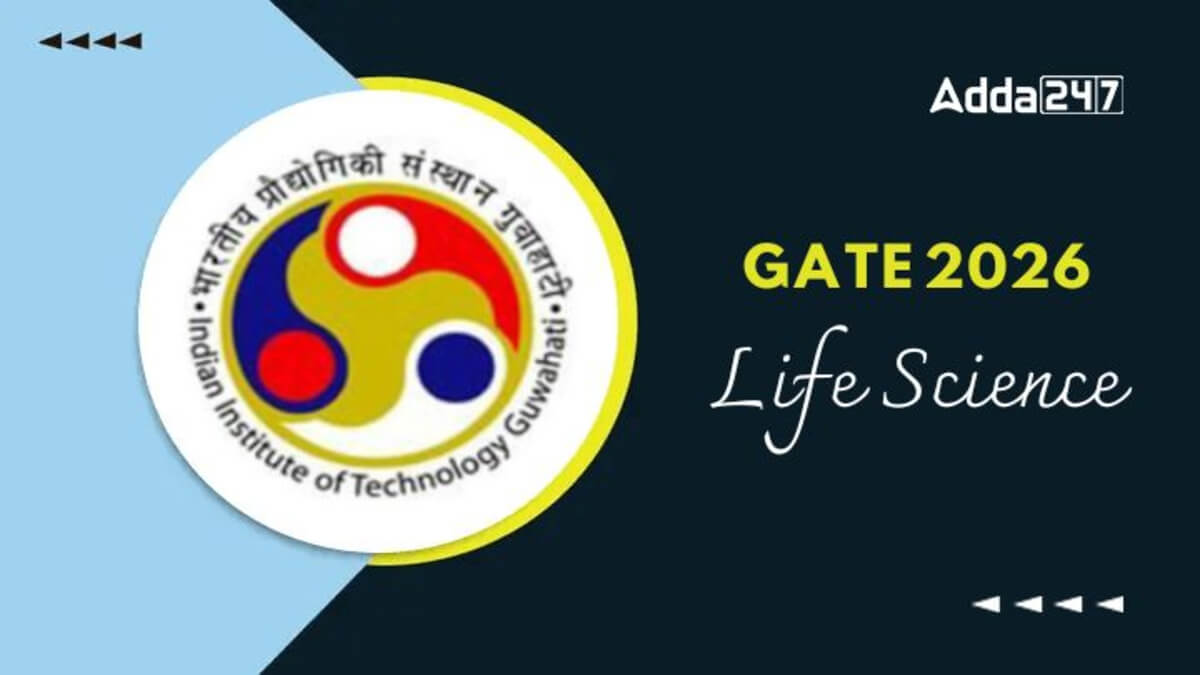The Indian Institute of Technology Guwahati (IIT Guwahati) will conduct the GATE exam in February 2026. Every year, many students take the GATE exam to get admission into postgraduate courses and selection for public sector companies. To do well in the GATE 2026 exam, especially for the Life Science branch, candidates need to be familiar with the latest syllabus. The GATE Life Science Syllabus 2026 provides a clear outline of all the topics that will be covered in the exam. We have provided the complete syllabus here to help students prepare more effectively. Make sure to go through it carefully and bookmark this page for future updates on GATE and other important exams.
GATE Life Science Syllabus 2026
The GATE Life Science Syllabus 2026 provides a clear outline of the subjects and topics that will be covered in the exam. To make it easier for candidates, we have shared the complete and detailed syllabus here. Go through the full GATE 2026 Life Science Syllabus below and stay connected with this website for the latest updates on the GATE exam.
GATE LS Syllabus 2026-Overview
Candidates going to appear for the GATE 2026 Exam must look at the detailed overview of the GATE LS syllabus 2026 mentioned in the section below:
| GATE Life Science Syllabus 2026 |
| GATE Full Form |
Graduate Aptitude Test for Engineering (GATE) |
| GATE Conducting Authority |
Indian Institute of Technology Guwahati |
| GATE 2026 Total No. of Papers |
30 (Data Science & Artificial Intelligence added) |
| GATE 2026 Starting Date of Application |
28 August 2025 |
| GATE 2026 Last Date of Application(without late fees) |
28 September 2025 |
| Mode of Exam |
Computer-Based Test (CBT) |
| Number of Questions Asked |
65 |
| GATE 2026 Marks Distribution |
15 Marks (General Aptitude) + 85 Marks (Subject Questions)= 100 Marks (Total) |
| GATE Exam Language |
English |
| GATE 2026 Marking Scheme |
One Mark and Two Marks |
| GATE Life Science Syllabus 2026 |
Available Now |
| Negative Marking |
Yes (for MCQ & MSQ) |
| GATE Official Website |
www.iitg.ac.in |
GATE Life Science Exam Pattern 2026
The GATE 2026 Exam consists of three sections, namely general aptitude, engineering mathematics, and subject-specific papers. All the questions in the GATE Life Science Paper will be of three types, viz. MCQ & MSQ. The aspirants must be well-versed in the GATE Exam Pattern 2026 Life Science to understand the complete blueprint of the question paper.
You must check the GATE 2026 Life Science Exam Pattern tabulated here in a brief manner to get familiar with the scheme of the paper. Check the detailed GATE Exam Pattern 2026 Life Science mentioned in the section below:
| GATE Life Science Exam Pattern 2026 |
| GATE 2026 Exam Mode |
Computer-Based Test (Online) |
| GATE 2026 Exam Duration |
3 Hours |
| No. of Subjects |
30 Subjects |
| GATE 2026 Total Marks |
100 Marks |
| GATE Exam 2026 Number of Questions Asked |
10 (GA) + 55 (subject) = 65 Questions |
| GATE Exam 2026 Type of Questions |
Multiple Choice Questions (MCQs) and Multiple Select Questions (MSQs) |
GATE Life Science Syllabus 2026 In Detail
The key points related to the GATE Life Science Syllabus 2026 are given below for the proper understanding of the candidates:
General Aptitude Syllabus
- Verbal Ability: The rules of grammar in English, Completion of sentences, Analogies in words, Word groups, Critical Reasoning, and Verbal deduction, including instructions
- Numerical Ability: Topics in this section primarily include Numerical Computation, Numerical Reasoning, Numerical Estimation, and Data Interpretation.
Chemistry Syllabus
| Topics |
Detailed Sub Topics |
| Atomic Structure and Periodicity |
Planck’s quantum theory, wave-particle duality, uncertainty principle, electronic configuration, Hund’s rule, periodic properties |
| Structure and Bonding |
Ionic and covalent bonding, MO and VB approaches, VSEPR theory, hybridization, resonance, dipole moment, hydrogen bonding |
| s, p, and d Block Elements |
Oxides, halides, hydrides, general characteristics of 3d elements, coordination complexes, color, geometry, magnetic properties |
| Chemical Equilibria |
Osmotic pressure, boiling point, freezing point, ionic equilibria, solubility product, hydrolysis of salts, pH, buffer |
| Electrochemistry |
Conductance, cell potentials, EMF, Nernst equation, thermodynamic aspects, applications |
| Reaction Kinetics |
Rate constant, order of reaction, activation energy, zero, first, and second order kinetics, catalysis, enzyme reactions |
| Thermodynamics |
First law, reversible and irreversible processes, internal energy, enthalpy, Kirchhoff equation, second law, entropy, free energy |
| Structure-Reactivity Correlations |
Acids and bases, stereochemistry, tautomerism, conformers, aromaticity, SN1, SN2, E1, E2 reactions, hydroboration reactions |
| Chemistry of Biomolecules |
Amino acids, proteins, nucleic acids, nucleotides, carbohydrates, lipids, biomolecule purification, and identification methods |
Biochemistry Syllabus
| Topics |
- Organization of life: Importance of water
- Structure and function of biomolecules: Amino acids, Carbohydrates, Lipids, Proteins, and nucleic acids
- Protein structure, folding, and function: Myoglobin, Hemoglobin, Lysozyme, Ribonuclease A, Carboxypeptidase, and chymotrypsin
- Enzyme kinetics, including regulation and inhibition, vitamins, and coenzymes
- Metabolism and bioenergetics: ATP generation and utilization, Glycolysis, TCA cycle, Pentose phosphate pathway, Oxidative phosphorylation, Gluconeogenesis, Glycogen and fatty acid metabolism, Nitrogen metabolism
- Photosynthesis: Calvin cycle
- Biochemical separation techniques: Ion exchange chromatography, Size exclusion chromatography, Affinity chromatography, Electrophoresis, UV-visible and fluorescence spectroscopy, Mass spectrometry
- Cell structure and organelles: Biological membranes, Action potential, Membrane transport, Protein targeting, Signal transduction
- DNA replication, transcription, and translation; Biochemical regulation of gene expression
- Recombinant DNA technology and applications: PCR, Site-directed mutagenesis, DNA microarray, Next-generation sequencing, Gene silencing, and editing
- Immune system: Innate and adaptive immunity, Immune cells, Antibody structure, function, and diversity, B cell and T cell receptors, B cell and T cell activation, Major histocompatibility complex (MHC), Immunological techniques, Monoclonal antibodies and their applications
|
Botany Syllabus
| Topics |
Detailed Sub Topics |
| Plant Systematics |
Botanical nomenclature, Plant classification, Molecular taxonomy, and Herbaria |
| Plant Anatomy |
Root, stem, leaf anatomy, Floral organs, Embryo, Primary and secondary meristems |
| Plant Development and Morphogenesis |
Angiosperm life cycle, Gametophyte development, Cell fate determination, Tissue patterning, Shoot and root apical meristems, Flowering transition |
| Plant Physiology and Biochemistry |
Water relations, Nutrient uptake, Stomatal movements, Nitrogen metabolism, Photosynthesis, and Respiration |
| Abiotic stresses, Biomolecules, and Secondary metabolites |
| Genetics and Genomics |
Cell cycle, Mendelian inheritance, Genetic mapping, Epigenetics, Gene silencing, and Genome structure |
| Gene expression, Mutation, Chromosomal aberrations, Transposons, and Functional genomics |
| Plant Breeding and Genetic Modification |
Selection, Hybridization, Molecular markers, Tissue culture, Gene transfer methods, and Genome editing |
| Economic and Applied Botany |
Economically important plants, Cash crops, Industrial impact, Genetically modified crops |
| Plant Pathology |
Plant diseases, Pathogen control, Pathogenesis, Resistance, and Plant-microbe interactions |
| Signaling pathways, Host-parasitic plant interaction |
| Ecology and Environment |
Ecosystems, Biogeochemical cycles, Succession, Food webs, Vegetation types, and Climate |
| Pollution, Biodiversity, Conservation, and Plant interactions with other organisms |
Microbiology Syllabus
| Topics |
Detailed Sub Topics |
| Historical Perspective |
Discovery of microbial world, Landmark discoveries in microbiology, Controversy over spontaneous generation, Role of microorganisms in organic matter transformation and disease causation |
| Methods in Microbiology |
Pure culture techniques, Microbial nutrition principles, Enrichment culture techniques, Antigen and antibody detection methods, Microscopy techniques, PCR and real-time PCR, and Next-generation sequencing technologies |
| Microbial Taxonomy and Diversity |
Bacteria and Archaea classification, Eukaryotic microbes: Yeasts, molds, and protozoa, Virus classification, Molecular approaches to microbial taxonomy and phylogeny |
| Prokaryotic Cells: Structure and Function |
Cell walls and membranes, Solute transport mechanisms, Flagella and Pili, Capsules, Cell inclusions like endospores and gas vesicles, Bacterial locomotion, and chemotaxis |
| Microbial Growth |
Definition of growth, Growth curve, Measurement of growth, Synchronous growth, Continuous culture, Environmental factors affecting growth, Bacterial biofilm and biofouling |
| Control of Microorganisms |
Disinfection and sterilization principles, Methods, and assessment of efficacy |
| Microbial Metabolism |
Energetics, Electron transport and oxidative phosphorylation, Overview of metabolism, Glycolysis, Pentose-phosphate pathway, Entner-Doudoroff pathway, Glyoxylate pathway, Citric acid cycle, Fermentation, Respiration, Chemolithotrophy, Photosynthesis, Biosynthetic pathways, and Regulatory mechanisms |
| Microbial Diseases and Host-Pathogen Interaction |
Microbiota, Classification of infectious diseases, Reservoirs of infection, Nosocomial infections, Opportunistic infections, Emerging infectious diseases, Pathogenicity mechanisms, Host defense mechanisms, Antigens and antibodies, Immune responses, Vaccines, Human diseases caused by microorganisms |
| Chemotherapy/Antibiotics |
Antimicrobial drug characteristics, Antibiotics classification, Mechanisms of action and resistance, Antifungal and antiviral drugs |
| Microbial Genetics |
Types of mutation, Mutagens, Selection of mutants, Bacterial genetic systems, DNA repair, Gene expression regulation, Operon model, Bacterial genome, Phage λ life cycle, RNA, Virus genomes, Microbial genomics concepts |
| Microbial Ecology |
Microbial interactions, Carbon, sulfur, and nitrogen cycles, Soil microorganisms, Bioremediation, Uncultivable microorganisms, Metagenomics, and metatranscriptomics |
Zoology Syllabus
| Topics |
Detailed Sub Topics |
| Animal Diversity |
Distribution, systematics, and classification of animals; Phylogenetic relationships using classical and molecular phylogenetic tools |
| Evolution |
Origin and history of life on earth, theories of evolution, natural selection, adaptation, and speciation |
| Genetics |
Molecular basis of heredity, Basic Principles of inheritance, sex determination and sex-linked characteristics, cytoplasmic inheritance, linkage, genetic disorders, recombination, and mapping of genes in eukaryotes, population genetics, and roles of model organisms in understanding genetic principles |
| Biochemistry and Molecular Biology |
Nucleic acids, proteins, lipids, and carbohydrates; roles of vitamins and minerals; replication, transcription, and translation; Krebs cycle; glycolysis; enzyme catalysis; hormones and their actions |
| Cell Biology |
Basic principles of cellular microscopy: structure of cells, chromosomes, cytoskeletal organization, cellular organelles and their structure and function, cell cycle, cell division, and chromatin structure |
| Gene expression in Eukaryotes |
Transposable elements, Eukaryotic genome organization and regulation of gene expression |
| Animal Anatomy and Physiology |
Comparative physiology: the respiratory system, the muscular system, the circulatory system, the digestive system, the nervous system, the excretory system, the endocrine system, and the skeletal system |
| Parasitology and Immunology |
The nature of parasites, host-parasite relations, protozoan and helminthic parasites, the immune response, and the cellular and humoral immune response |
| Development Biology |
Gametogenesis, organogenesis, Embryonic development, cellular differentiation, Model organisms used in developmental biology, metamorphosis, the genetic and molecular basis of development, and stem cells |
| Ecology |
Food chain, population dynamics, species diversity, zoogeography, biogeochemical cycles, conservation biology, and ecotoxicology |
| Animal Behaviour |
Animal behavior types, courtship, mating, and territoriality, instinct, learning, and memory, social behavior among animal species, communication, pheromones, and animal behavior evolution |
Food Technology Syllabus
| Topics |
Detailed Sub Topics |
| Food Chemistry and Nutrition |
Carbohydrates, Proteins, Lipids, Pigments, Food flavors, Enzymes, Nutrition and Chemical and biochemical changes |
| Food Microbiology |
Characteristics of Microorganisms, Microbial Growth, Food Spoilage, Toxins from Microbes, and Fermented Foods and Beverages |
| Food Products Technology |
Processing Principles, Food Packaging and Storage, Cereal Processing and Products, Oil Processing, Fruits and Vegetables Processing, Plantation Crops Processing and Products, Milk and Milk Products Processing, Processing of Animal Products, Waste Utilization, Food Standards, and Quality Maintenance |
| Food Engineering |
Mass and energy balance, Momentum transfer, Heat transfer, Mass transfer, Mechanical operations, Thermal operations, and Mass transfer operations |
GATE Life Science Syllabus PDF
The candidates can download the GATE Syllabus PDF for Life Science through the direct link provided below. The GATE Life Science Syllabus PDF contains the topic-wise syllabus of all the sections briefly for the ease of candidates. By knowing the GATE Life Science Syllabus, aspirants can plan and strategize their preparation journey to score the desired marks and rank in the GATE Examination 2026.

Sharing is caring!




 RRB JE Mechanical Syllabus 2026, Check D...
RRB JE Mechanical Syllabus 2026, Check D...
 RRB JE Electrical Syllabus 2026, Check E...
RRB JE Electrical Syllabus 2026, Check E...
 TNPSC CTS Syllabus 2026, Subject Wise Sy...
TNPSC CTS Syllabus 2026, Subject Wise Sy...





